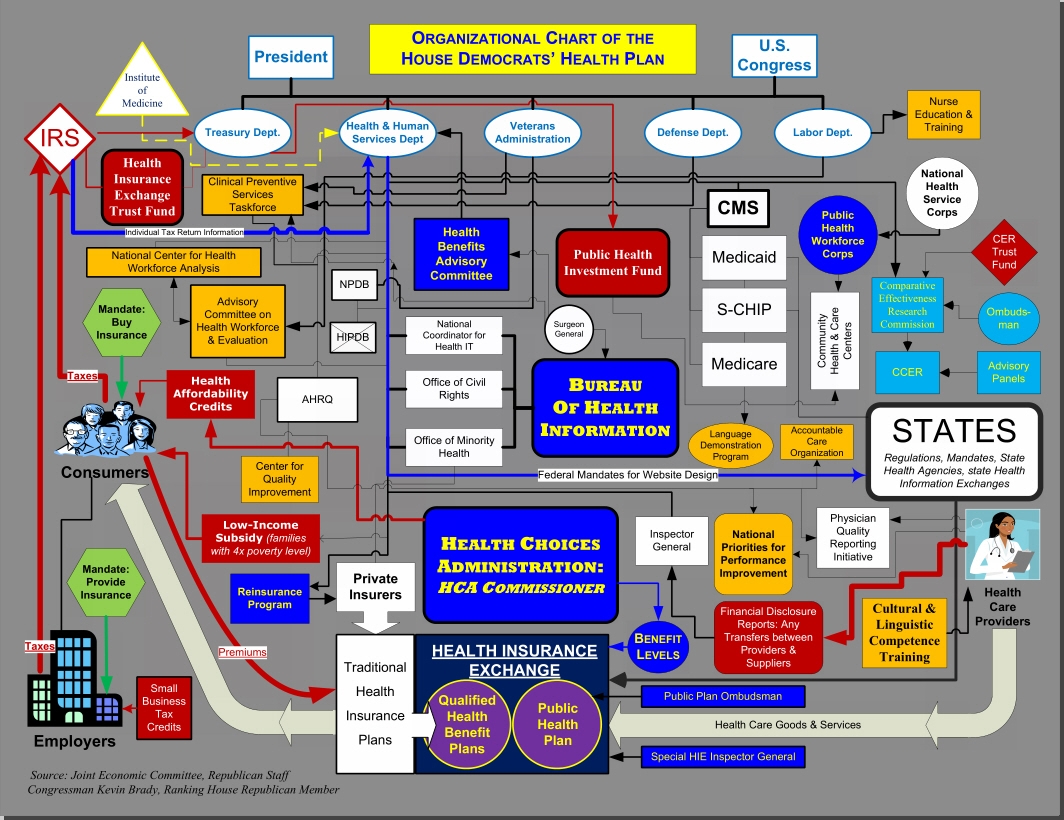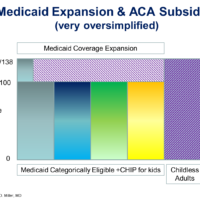With Congress in the midst of considering health reform legislation, the slanting rhetoric about the proposals is escalating. For example, TV shows such as The Daily Show are covering the debate, and Congressional Republicans have put out a graphic showing their view of the health system the proposal from the Democrats in the House of Representatives would create:
What I find very, very, very interesting in this view, (prepared by Republican Congressional staff), is the top line of the graphic showing the US Congress operating on an equal basis with the President in running the Federal Departments of Treasure, HHS, VA, Defense, and Labor. This might just be a liberal reading of the Constitutional powers of different branches of the Federal government – but I thought the Republican viewpoint tended to be more of a literal interpretation of the Constitution. So while the point of this chart might have been to show how confusing the Democrats’ proposals might be, I’m more confused by what it shows about the Republican’s view of the role of Congress in running the government.
Simple v. Complex Solutions for Problems in Complex Systems
Having worked in the House and the Senate, and the White House and a Federal agency (NIH), I find this interpretation of the role of Congress in our government’s operations to be as worrisome as any potential complexity of the health reform proposals. Actually, I would be more worried if our elected officials were saying that they had simple solutions to our health care system’s costs, access and quality problems, since that would violate the general principle of, “if it was simple, someone would have done it already.” I think even the casual observing American would realize that our healthcare system is complex, and simple solutions aren’t realistic in the real world – which, of course, is very different than the political world.



Interesting point HelicalZz – I hadn’t noticed that. And of course, clinicians feelings about being called “Providers” are about the same as patients being called “Consumers.”
Consumers (not patients?) on the left, providers on the right seems about correct.